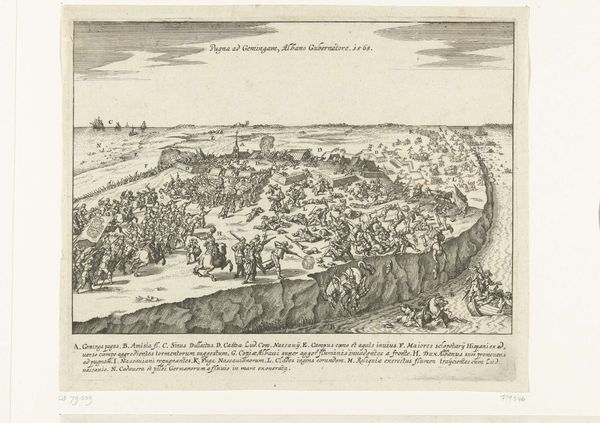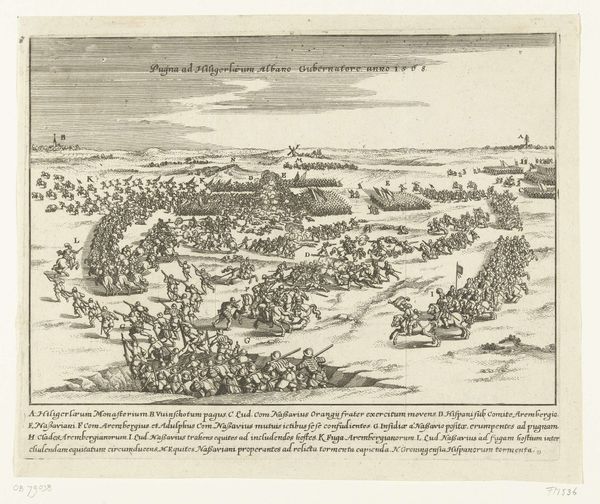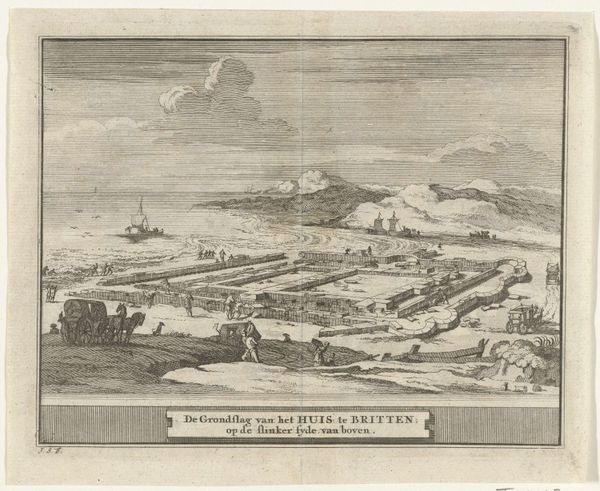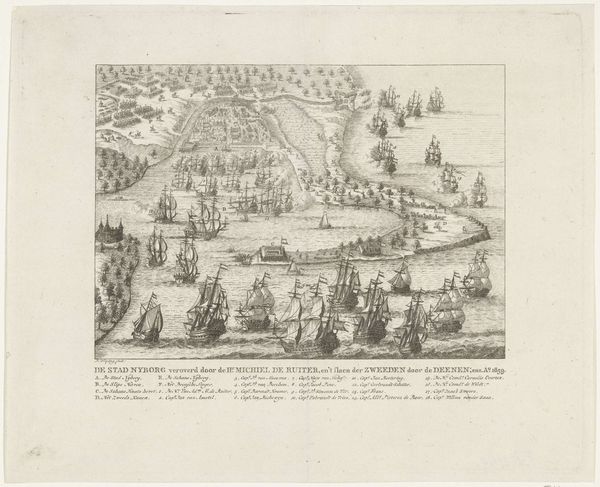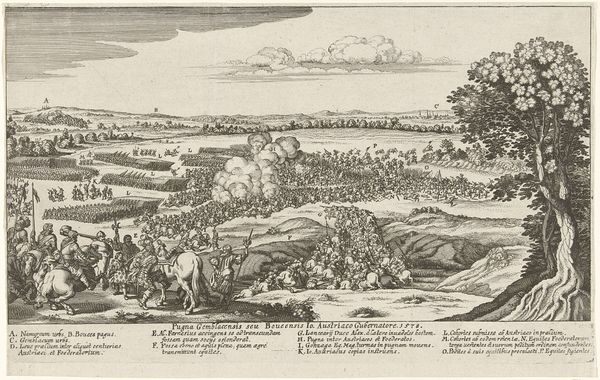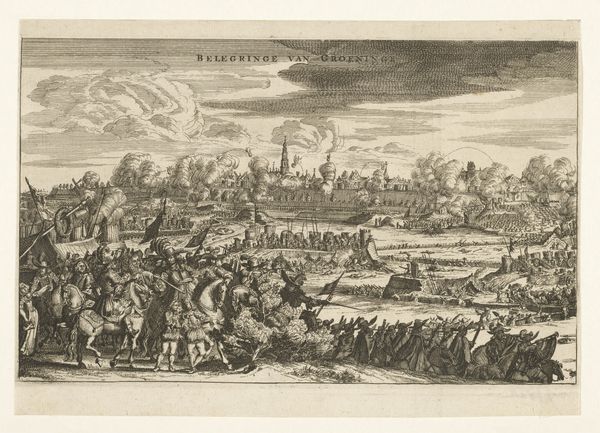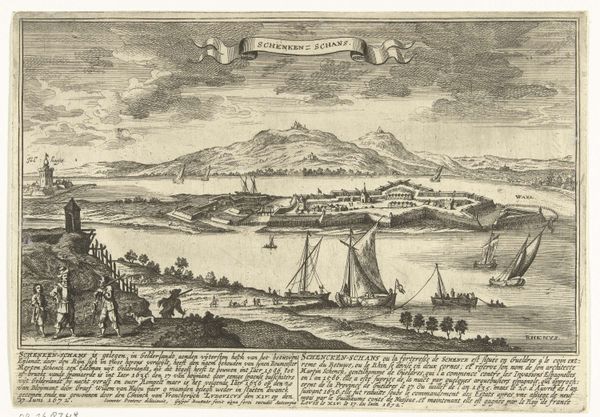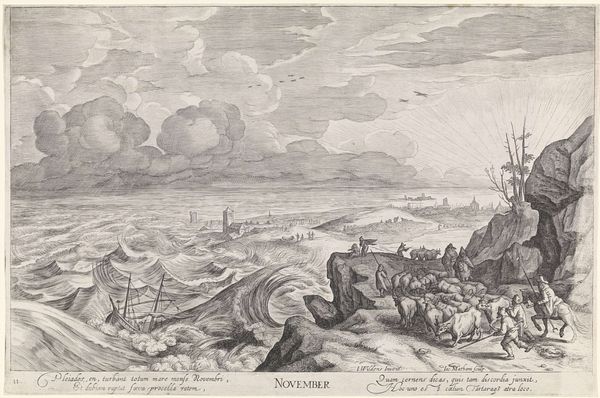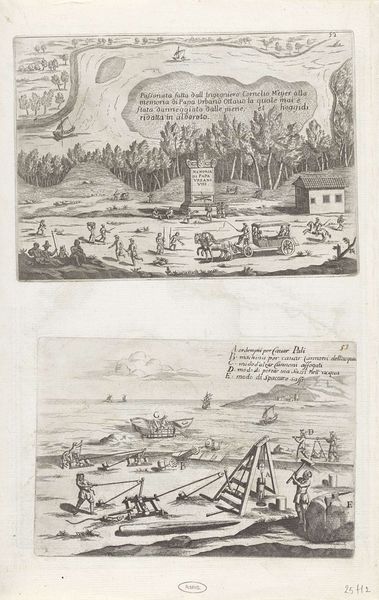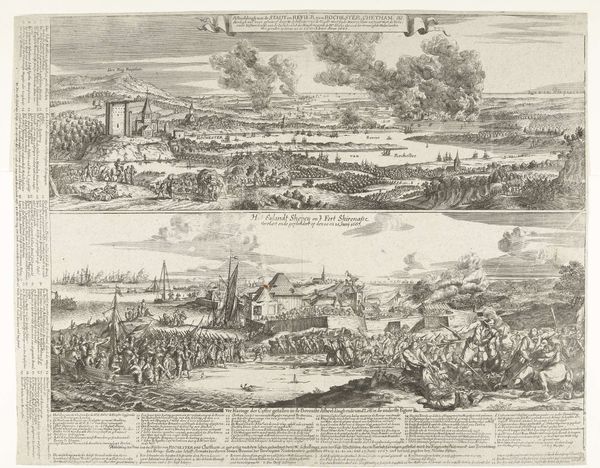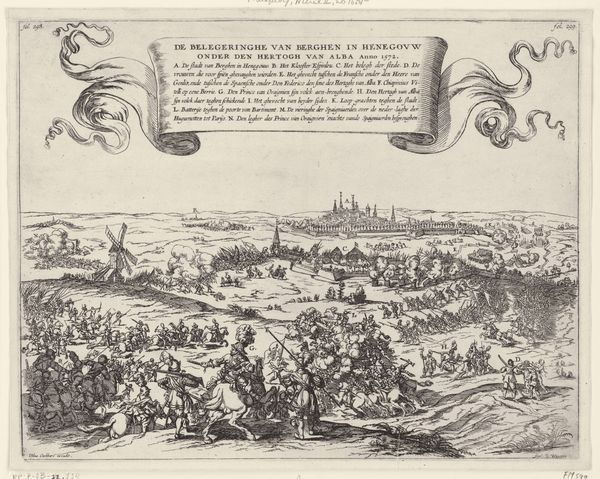
print, engraving
#
baroque
# print
#
landscape
#
cityscape
#
engraving
Dimensions: height 170 mm, width 243 mm
Copyright: Rijks Museum: Open Domain
Curator: Let's discuss this print, “Gezicht op Coevorden, 1672,” or “View of Coevorden, 1672” by Gaspar Bouttats. The Rijksmuseum tells us it was probably created between 1682 and 1684 and produced as an engraving. What are your first impressions? Editor: The monochromatic palette definitely establishes a somber tone, though I also find it a bit sterile. The etching technique yields such clean, precise lines it almost feels mechanical rather than organic. Curator: I find that crispness particularly compelling. Look at the strategic deployment of hatching and cross-hatching. Bouttats uses these formal techniques to simulate depth and texture. It's masterful for the period! See how he guides our eye towards the fortressed city? The composition emphasizes Coevorden’s strategic military position. Editor: While technically impressive, these kinds of bird's-eye-views tend to gloss over the lived realities within those fortresses. How did class structures, religious tensions, and political unrest impact the lives of everyday people within the city walls? What did this represent to the Dutch republic during a period filled with power struggles? Curator: Undoubtedly, this work should be viewed as propagandistic, idealizing Dutch power. But consider the elegance in its execution. The lines delineate everything, emphasizing forms, volume, and recession, particularly evident in the subtle atmospheric perspective towards the horizon. Editor: But by omitting certain elements – the stench of the canals, the inequalities in access to resources within the city, the struggles between the government in Coevorden and the rural dwellers beyond its fortified border – the piece actively obscures the complexities of that time. Doesn’t this omission impact its supposed artistry? Curator: That’s a fair point, yet its value resides in how it captures and manipulates perspective and proportion. These elements coalesce into a cohesive aesthetic experience, irrespective of any historical elisions. Look again at the scale. By dwarfing figures and nature to exaggerate Coevorden’s position and fortification, it enhances Dutch agency. Editor: To focus solely on composition feels like a way of legitimizing dominant narratives without interrogating them. But what about recognizing Bouttats’ print as part of a broader effort to shape perceptions about territorial control? Curator: Perhaps… However, one can also argue that through careful construction of light, texture, and form, "View of Coevorden" provides the formal framework to interpret ideas around power. Editor: Ultimately, approaching this engraving requires recognizing its artifice, acknowledging what’s visually present and contemplating what pointedly isn’t. Curator: And it requires contemplating how formal artistry both represents and reflects ideology of power in Dutch history.
Comments
No comments
Be the first to comment and join the conversation on the ultimate creative platform.
